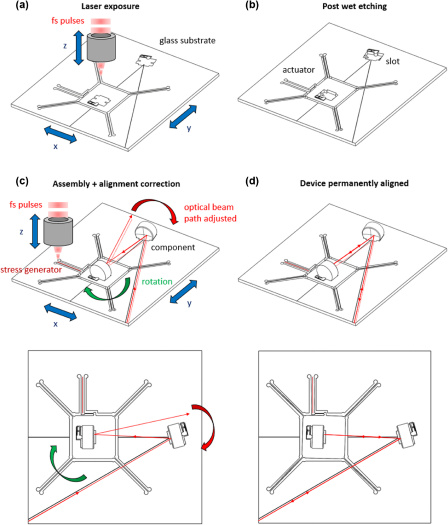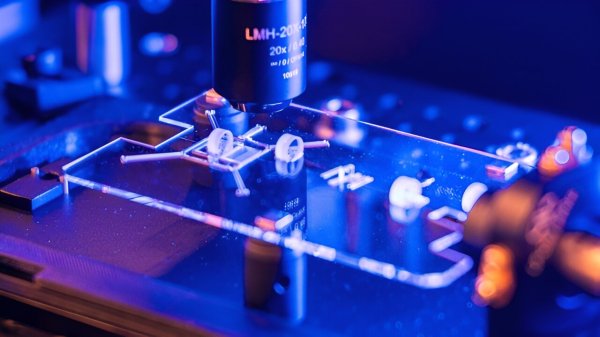When researchers at the Galatea laboratory in Switzerland set out to create a femtosecond laser in glass they weren’t certain it was going to work. To be precise, their goal was to create a femtosecond laser cavity using carefully aligned optics. Rather than using the traditional, discrete method, they used a commercial femtosecond laser to carve out the elements of the optical cavity in glass. The choice for glass came down to the low thermal expansion of this material, and it being transparent for the optical frequencies being targeted.

Even after using the existing laser to create the rough laser cavity, the resulting optical mirrors were not aligned properly, but this was all part of the plan.
By also adding slots that created a flexure mechanism, brief laser pulses could be used to gradually adjust the mirrors to create the perfect alignment. During subsequent testing of the newly created laser cavity it was found to be operating as expected. The original femtosecond laser had successfully created a new femtosecond laser.
Perhaps the most tantalizing aspect of this research is that this could enable much faster and ultimately cheaper production of such laser systems, especially once the tedious and currently completely manual mirror alignment procedure is automated. In addition, it raises the prospect of producing other types of optics including splitters and guides in a similar manner.













